Evaluation of the Performance of Two Australian Waste-Plastic-Modified Hot Mix Asphalts
Abstract
:1. Introduction
2. Materials and Methodology
2.1. Materials
2.2. Sample Fabrication
2.3. Marshall Tests
2.4. Wheel-Tracking Test
3. Results and Discussion
3.1. Marshall Test Results
3.2. Influence of Waste PET Content on Marshall Results
4. Rutting and Plastic-Modified Asphalt
5. Conclusions
- The results highlighted the essential role of waste plastic in improving the stiffness and rutting resistance. The Marshall stability, Marshall flow, and MQ of Marshall tests exhibited good improvement by using PET in modified SMA and AC mixtures.
- A similar trend was found as the PET-modified SMA and AC mixtures could resist the plastic deformation and shear stresses which, in turn, reduced the rut depth of the modified mixtures. Results show the lowest rut depth of 2.08 mm of 8% PET-modified stone mastic asphalt. However, the highest results of Marshall stability and rutting resistance were achieved for PET-modified SMA mixtures.
- Based on the above results, it can be concluded that PET, as a recycled polymer, can significantly improve the engineering properties of the asphalt mixture. In addition, higher contents, of 6% and 8%, could make the SMA mixtures more stable and durable. As such, from the engineering point of view, this study showed that the use of waste plastic as a bitumen modifier is economical and environmentally friendly. Moreover, using waste plastic in asphalt modification could significantly reduce the rutting deformation.
- The advance of utilising waste plastic as an ecological-environmentally friendly modifier in Australian’s bitumen was performed and examined. The results show the possibility to use waste plastic in modifying asphalt mixtures.
Author Contributions
Funding
Institutional Review Board Statement
Informed Consent Statement
Data Availability Statement
Conflicts of Interest
References
- Chegenizadeh, A.; Ghadimi, B.; Nikraz, H.; Şimşek, M. A novel two-dimensional approach to modelling functionally graded beams resting on a soil medium. Struct. Eng. Mech. 2014, 51, 727–741. [Google Scholar] [CrossRef]
- Keramatikerman, M.; Chegenizadeh, A. Effect of Particle Shape on Monotonic Liquefaction: Natural and Crushed Sand. Exp. Mech. 2017, 57, 1341–1348. [Google Scholar] [CrossRef]
- Ali, A.H.; Mashaan, N.S.; Karim, M.R. Investigations of Physical and Rheological Properties of Aged Rubberised Bitumen. Adv. Mater. Sci. Eng. 2013, 2013, 239036. [Google Scholar]
- Mahrez, A. Properties and Performance of Stone Mastic Asphalt Reinforced with Glass Fibre. Ph.D. Thesis, Faculty of Engineering, University of Malaya, Kuala Lumpur, Malaysia, 2008. [Google Scholar]
- Xu, F.; Zhao, Y.; Li, K. Using waste plastics as asphalt modifier: A review. Materials 2022, 15, 110. [Google Scholar] [CrossRef]
- Ma, Y.; Zhou, H.; Jiang, X.; Polaczyk, P.; Xiao, R.; Zhang, M.; Huang, B. The utilization of waste plastics in asphalt pavements: A review. Clean. Mater. 2021, 2021, 10031. [Google Scholar] [CrossRef]
- Mashaan, N.S.; Rezagholilou, A.; Nikraz, H. Waste Polymer as Additive in Asphalt pavement reinforcement: A review. In Proceedings of the 18th AAPA International Flexible Pavements Conference, Sydney, Australia, 18–21 August 2019. [Google Scholar]
- Aubert, J.E.; Husson, B.; Sarramone, N. Utilization of municipal solid waste incineration (MSWI) fly ash in blended cement: Part 2: Mechanical strength of mortars and environmental impact. J. Hazard. Mater. 2007, 156, 12–19. [Google Scholar] [CrossRef]
- Chegenizadeh, A.; Nikraz, H. Composite soil: Fiber inclusion and strength. Adv. Mater. Res. 2011, 308–310, 1646–1650. [Google Scholar] [CrossRef]
- Chegenizadeh, A.; Nikraz, H. Investigation on strength of fiber reinforced clay. Adv. Mater. Res. 2011, 261–263, 957–963. [Google Scholar] [CrossRef]
- Al-rkaby, A.H.J.; Chegenizadeh, A.; Nikraz, H.R. Cyclic behavior of reinforced sand under principal stress rotation. J. Rock Mech. Geotech. Eng. 2017, 9, 585–598. [Google Scholar] [CrossRef]
- Hasan, U.; Chegenizadeh, A.; Budihardjo, M.A.; Nikraz, H. Shear strength evaluation of bentonite stabilised with recycled materials. J. Geoeng. 2016, 11, 59–73. [Google Scholar]
- Zakaria, N.M. Characterisation of Bitumen and Asphalt Mixture with Recycled Waste Plastic (RWP) Modified Binder. Ph.D. Thesis, University of Nottingham, Nottingham, UK, 2020. [Google Scholar]
- White, G. A Synthesis on the Effects of Two Commercial Recycled Plastics on the Properties of Bitumen and Asphalt. Sustainability 2020, 12, 8594. [Google Scholar] [CrossRef]
- Hamedi, G.H.; Hadizadeh Pirbasti, M.; Ranjbar Pirbasti, Z. Investigating the Effect of Using Waste Ultra-high-molecular-weight Polyethylene on the Fatigue Life of Asphalt Mixture. Period. Polytech. Civ. Eng. 2020, 64, 1170–1180. [Google Scholar] [CrossRef]
- Modarres, A.; Hamedi, H. Effect of waste plastic bottles on the stiffens and fatigue properties of modified asphalt mixes. Mater. Des. 2014, 61, 8–15. [Google Scholar] [CrossRef]
- El-Naga, I.; Ragab, M. Benefits of utilizing the recycle polyethylene terephthalate waste plastic materials as a modifier to asphalt mixtures. Constr. Build. Mater. 2019, 219, 81–90. [Google Scholar] [CrossRef]
- Chegenizadeh, A.; Keramatikerman, M.; Panizza, S.; Nikraz, H. Effect of powdered recycled tire on sulfate resistance of cemented clay. J. Mater. Civ. Eng. 2017, 29, 04017160. [Google Scholar] [CrossRef]
- Asare, P.N.A.; Kuranchie, F.A.; Ofosu, E.A. Evaluation of incorporating plastic wastes into asphalt materials for road construction in Ghana. Cogent Environ. Sci. 2019, 5, 1576373. [Google Scholar] [CrossRef]
- Santos, J.; Pham, A.; Stasinopoulos, P. Recycling waste plastics in roads: A life-cycle assessment study using primary data. Sci. Total Environ. 2020, 751, 141842. [Google Scholar] [CrossRef]
- Jamshidi, A.; White, G. Evaluation of Performance and Challenges of Use of Waste Materials in Pavement Construction: A Critical Review. Appl. Sci. 2020, 10, 226. [Google Scholar] [CrossRef] [Green Version]
- Hake SLDamgir RMAwsarmal, P.R. Utilization of Plastic waste in Bitumen Mixes for Flexible Pavement. Transp. Res. Proc. 2020, 48, 3779–3785. [Google Scholar]
- Haider, S.; Hafeez, I.; Ullah, R. Sustainable use of waste plastic modifiers to strengthen the adhesion properties of asphalt mixtures. Constr. Build. Mater. 2020, 235, 117496. [Google Scholar] [CrossRef]
- Al-Haydari, I.S.; Al-Haidari, H.S. Mechanical properties of polyethylene terephthalate-modified pavement mixture. Mater. Sci. Eng. 2020, 870, 012073. [Google Scholar] [CrossRef]
- Kumar, R.; Khan, M.A. Use of plastic waste along with bitumen in construction of flexible pavement. Int. J. Eng. Res. Technol. 2020, 9, 153–158. [Google Scholar]
- Casey, D.; McNally, C.; Gibney, A.; Gilchrist, M.D. Development of a recycled polymer modified binder for use in stone mastic asphalt. Resour. Conserv. Recycl. 2008, 52, 1167–1174. [Google Scholar] [CrossRef]
- Dalhat, M.A.; Al-Abdul Wahhab, H.I. Performance of recycled plastic waste modified asphalt binder in Saudi Arabia. Int. J. Pavement Eng. 2017, 18, 349–357. [Google Scholar] [CrossRef]
- Piromanski, B.; Chegenizadeh, A.; Mashaan, N.; Nikraz, H. Study on HDPE Effect on Rutting Resistance of Binder. Buildings 2020, 10, 156. [Google Scholar] [CrossRef]
- Ameri, M.; Nasr, D. Performance properties of devulcanized waste PET modified asphalt mixtures. Pet. Sci. Technol. 2017, 35, 99–104. [Google Scholar] [CrossRef]
- Mashaan, N.; Chegenizadeh, A.; Nikraz, H. Laboratory Properties of Waste PET Plastic-Modified Asphalt Mixes. Recycling 2021, 6, 49. [Google Scholar] [CrossRef]
- Costa, L.M.B.; Silva, H.M.R.D.; Peralta, J.; Oliveira, J.R.M. Using waste polymers as a reliable alternative for asphalt binder modification—Performance and morphological assessment. Constr. Build. Mater. 2019, 198, 237–244. [Google Scholar] [CrossRef]
- O’Farrell, K. 2016–17 Australian Plastics Recycling Survey—National Report; Australian Government, Department of Environment and Energy: Canberra, Australia, 2018.
- Mashaan, N.S.; Chegenizadeh, A.; Nikraz, H.; Rezagholilou, A. Investigating the engineering properties of asphalt binder modified with waste plastic polymer. Ain Shams Eng. J. 2021, 12, 1569–1574. [Google Scholar] [CrossRef]
- Zoorob, S.E.; Suparma, L.B. Laboratory design and investigation of the properties of continuously graded Asphaltic concrete containing recycled plastics aggregate replacement (Plastiphalt). Cem. Concr. Compos. 2000, 22, 233242. [Google Scholar] [CrossRef]
- Awwad, M.T.; Shbeeb, L. The Use of Polyethylene in Hot Asphalt Mixtures. Am. J. Appl. Sci. 2007, 4, 390–396. [Google Scholar] [CrossRef]
- AS/NZS 2891.5-2015; Australian/New Zealand Standard, Compaction of Asphalt by Marshall Method and Determination of Stability and Flow, Marshall Procedure. Standard Australia, Standard New Zealand: Sydney, Australia, 2015; pp. 1–17.
- AG: PT/T231; 2006 Deformation Resistance of Asphalt Mixtures by the Wheel Tracking Test. Austroads: Sydney, Australia, 2006; pp. 1–11.
- Siddique, R.; Khatib, J.; Kaur, I. Use of recycled plastic in concrete: A review. Waste Manag. 2008, 28, 1835–1852. [Google Scholar] [CrossRef] [PubMed]
- Asi, I.M. Laboratory comparison study for the use of stone mastic asphalt in hot weather climates. Constr. Build. Mater. 2006, 20, 982–989. [Google Scholar] [CrossRef]
- Sara, F.; Silva, H.M.R.D.; Oliveira, J.R.M. Mechanical, surface and environmental evaluation of stone mastic asphalt mixtures with advanced asphalt binders using waste materials. Road Mater. Pavement Des. 2017, 20, 316–333. [Google Scholar]
- Al-rkaby, A.H.J.; Chegenizadeh, A.; Nikraz, H.R. Directional-dependence in the mechanical characteristics of sand: A review. Int. J. Geotech. Eng. 2016, 10, 499–509. [Google Scholar] [CrossRef]
- Ali, A.H. Influence of Crumb Rubber Modifier on Performance Characteristics of Stone Mastic Asphalt Mixture. Master’s Thesis, University of Malaya, Kuala Lumpur, Malaysia, 2013. [Google Scholar]
- Ahmed, L.A. Improvement of marshall properties of the asphalt concrete mixture using the polyethylene as additive. Eng. Tecnol. 2007, 25, 383–394. [Google Scholar]


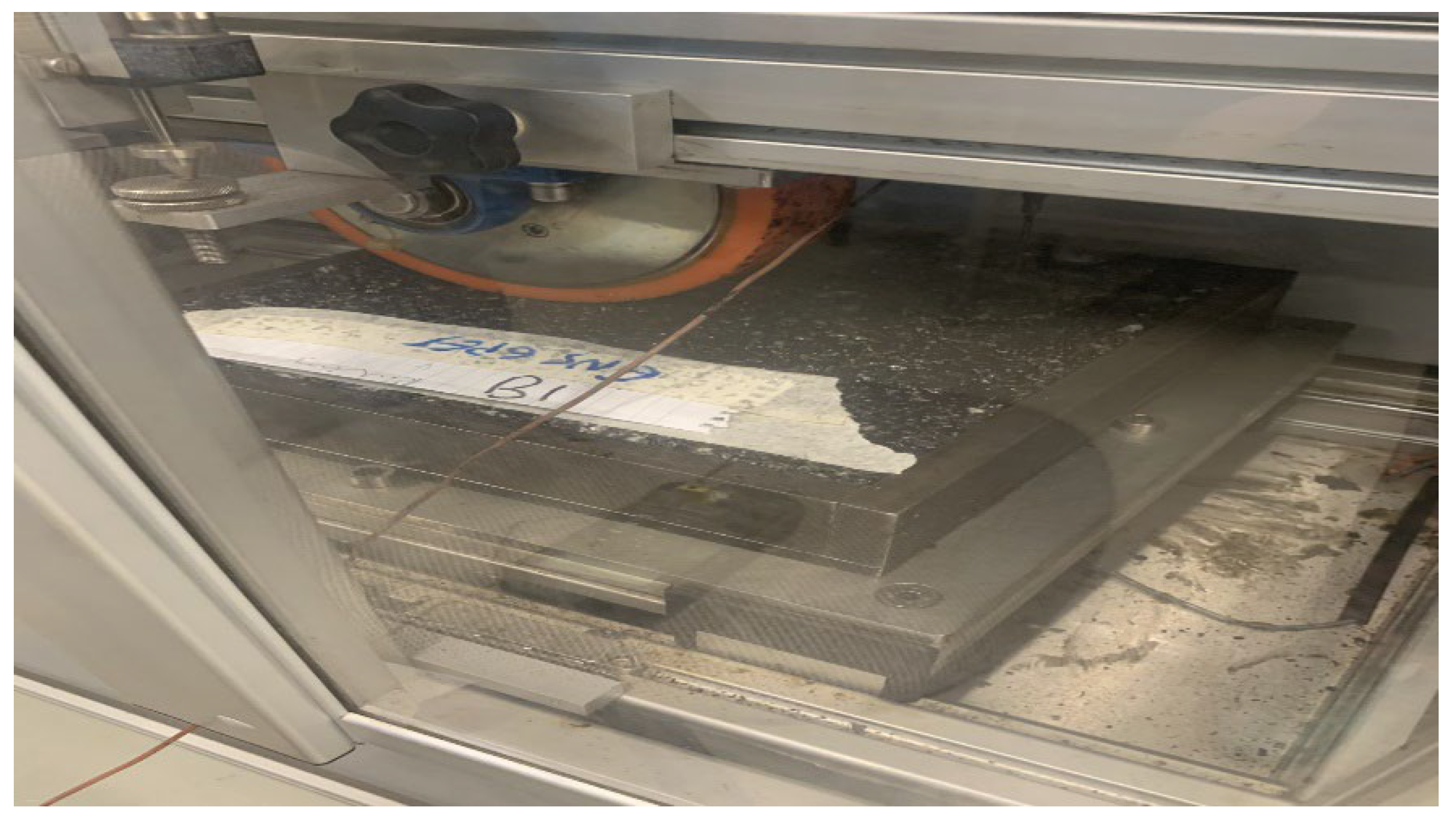

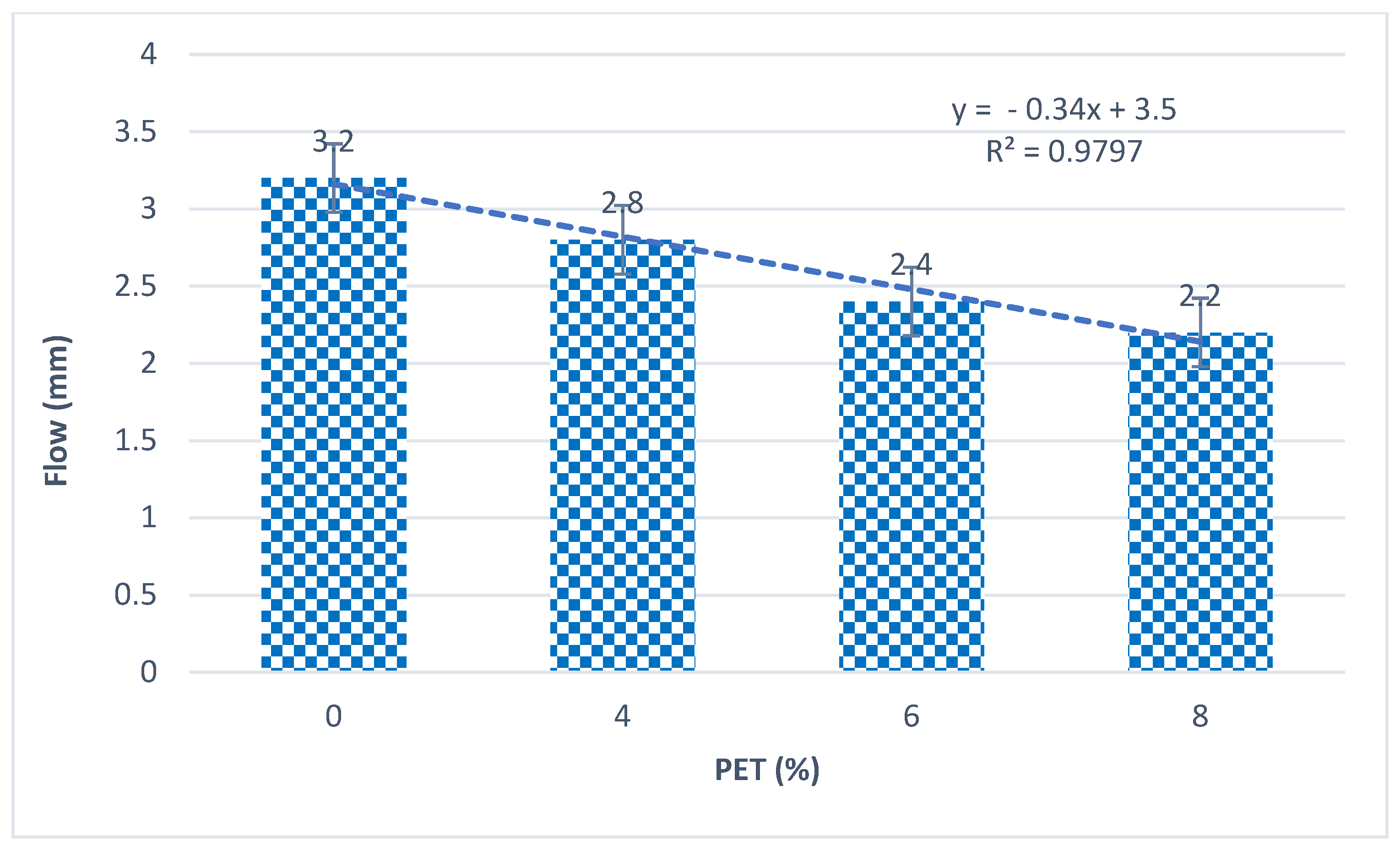
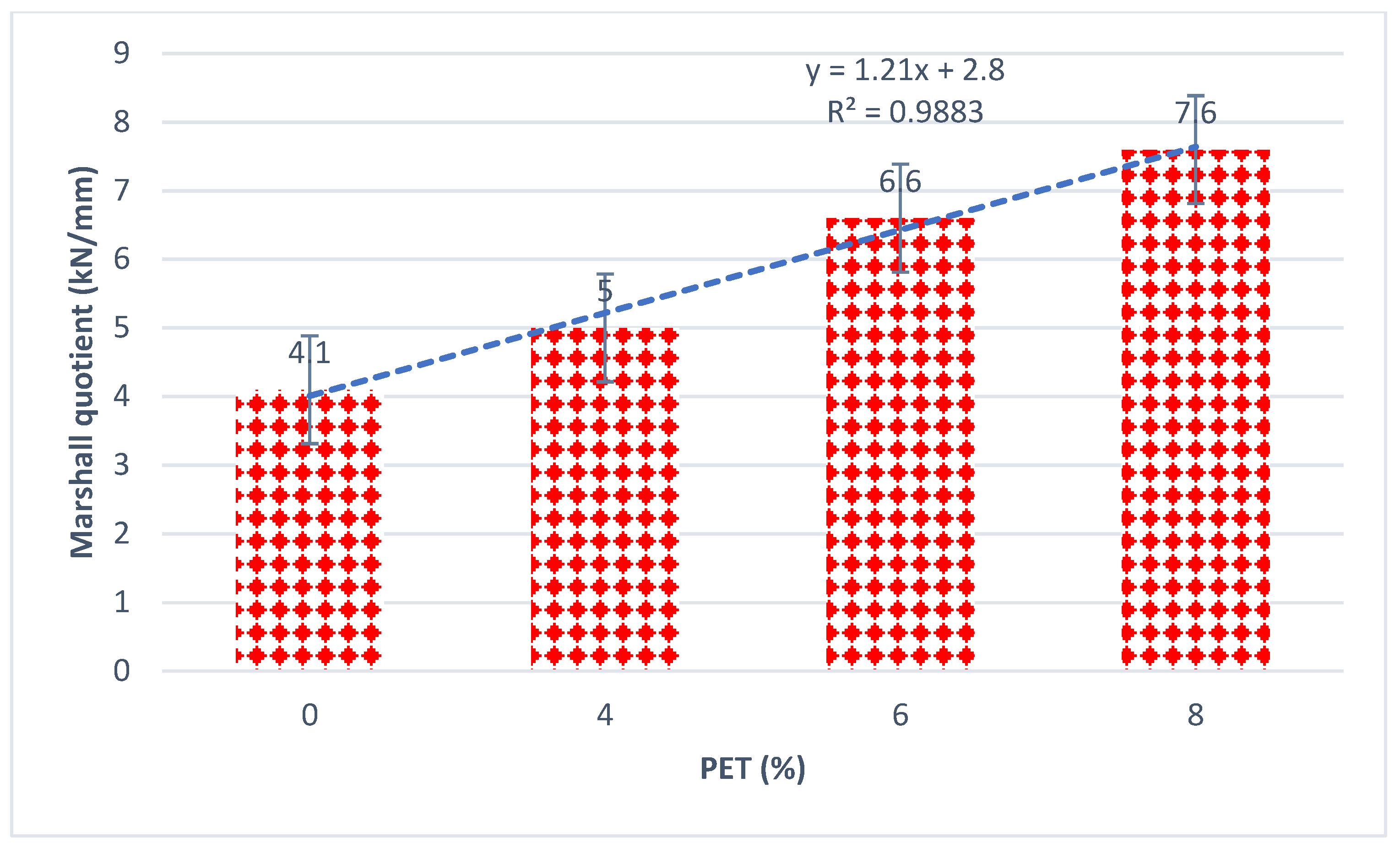
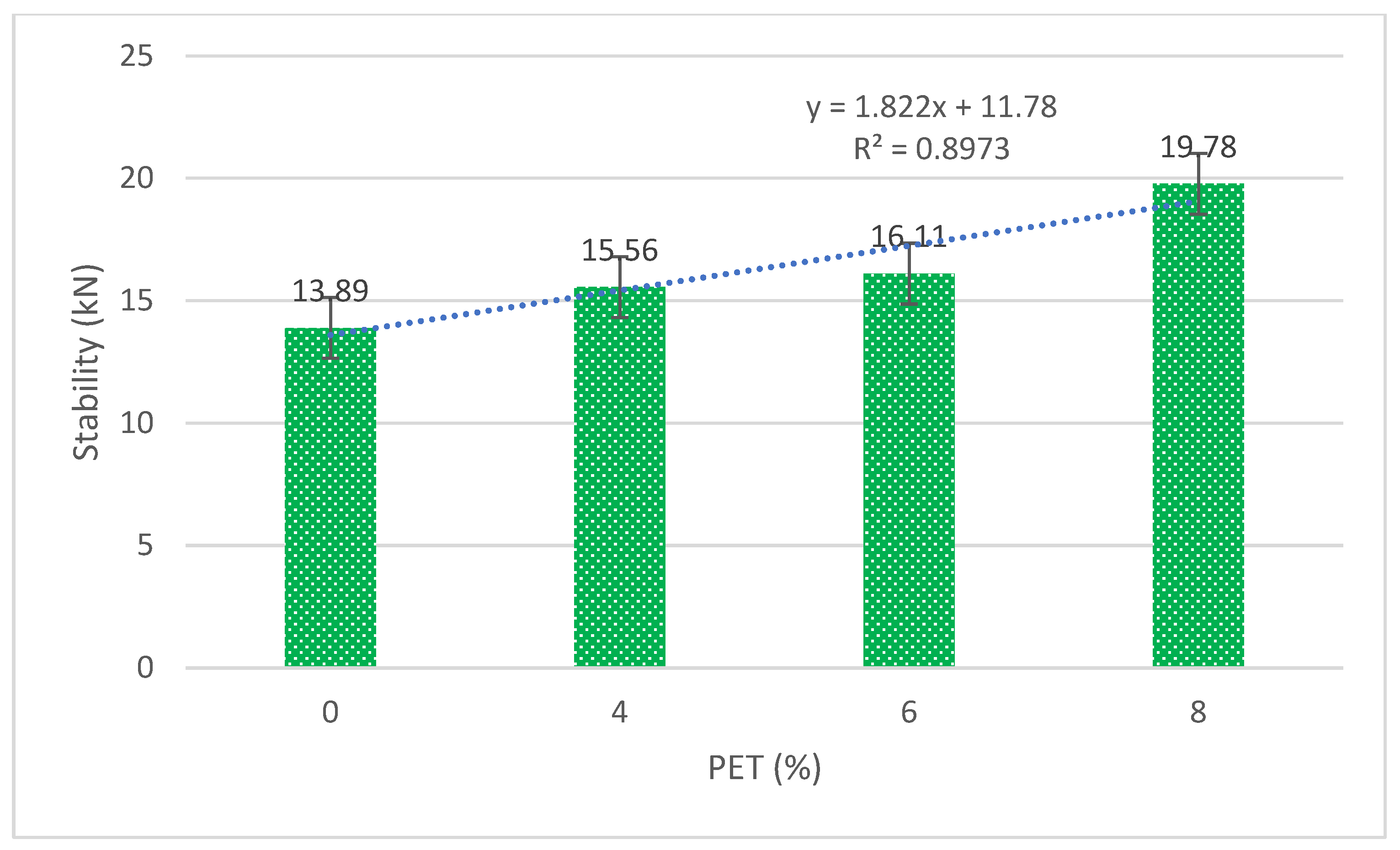
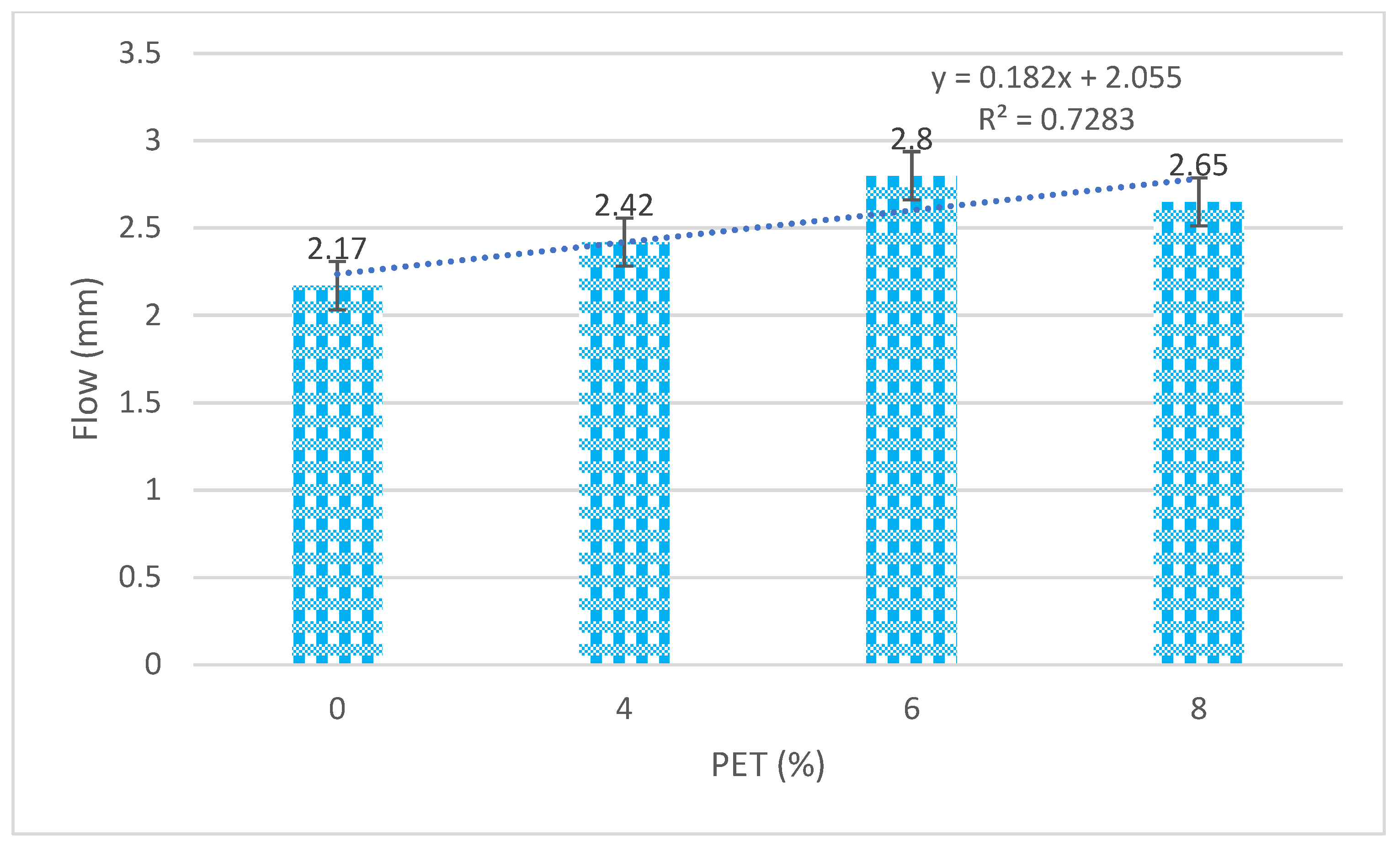
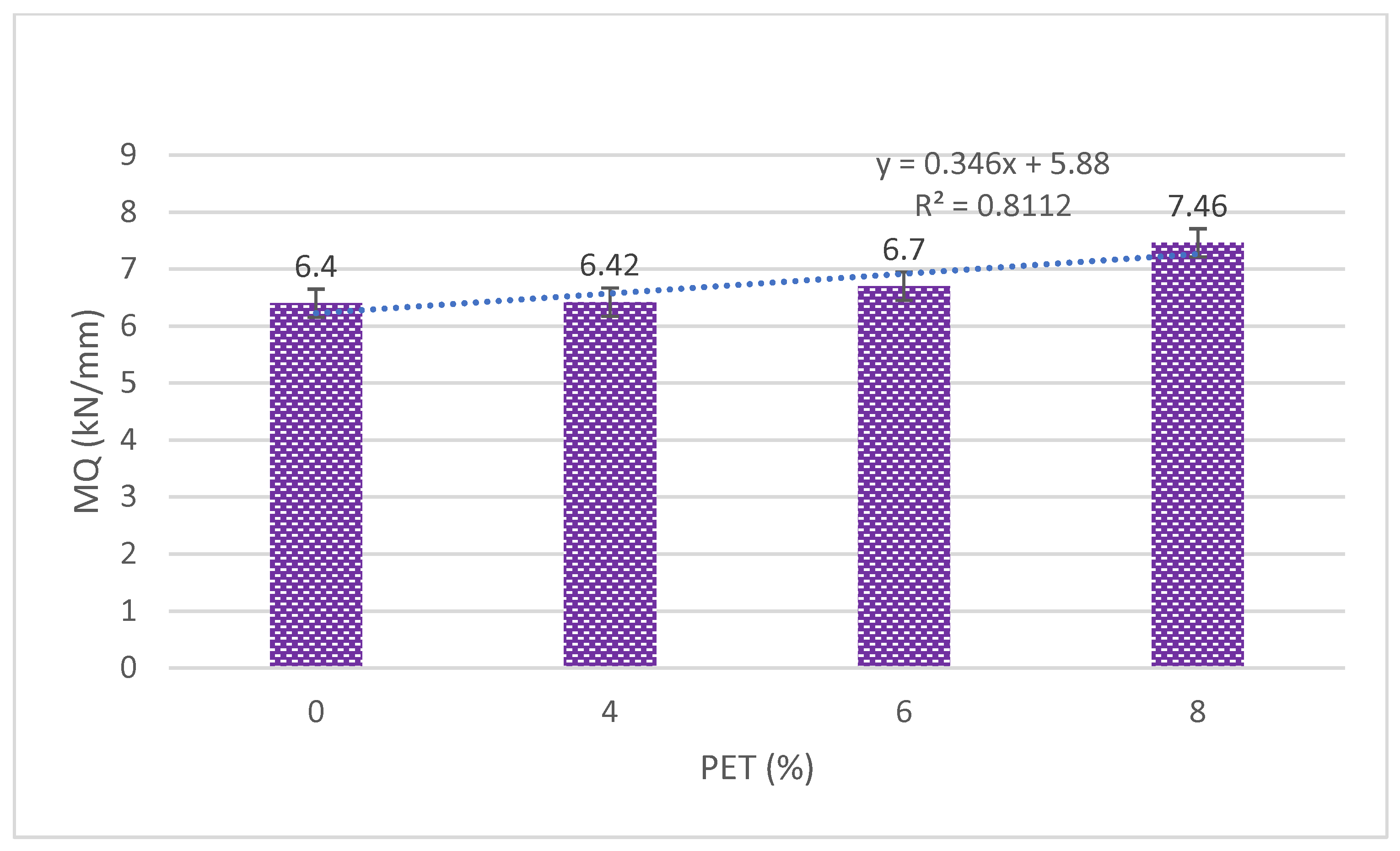
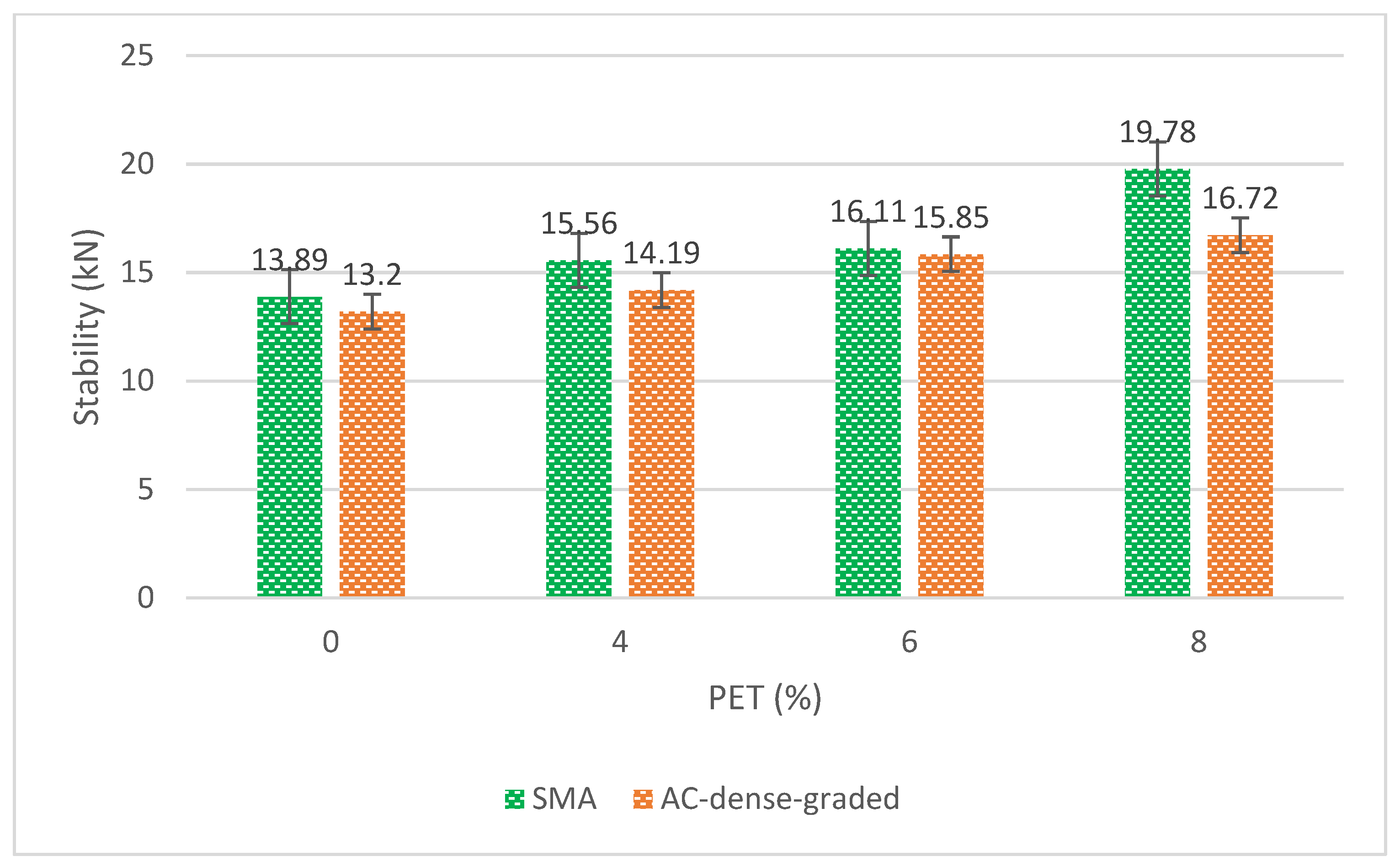
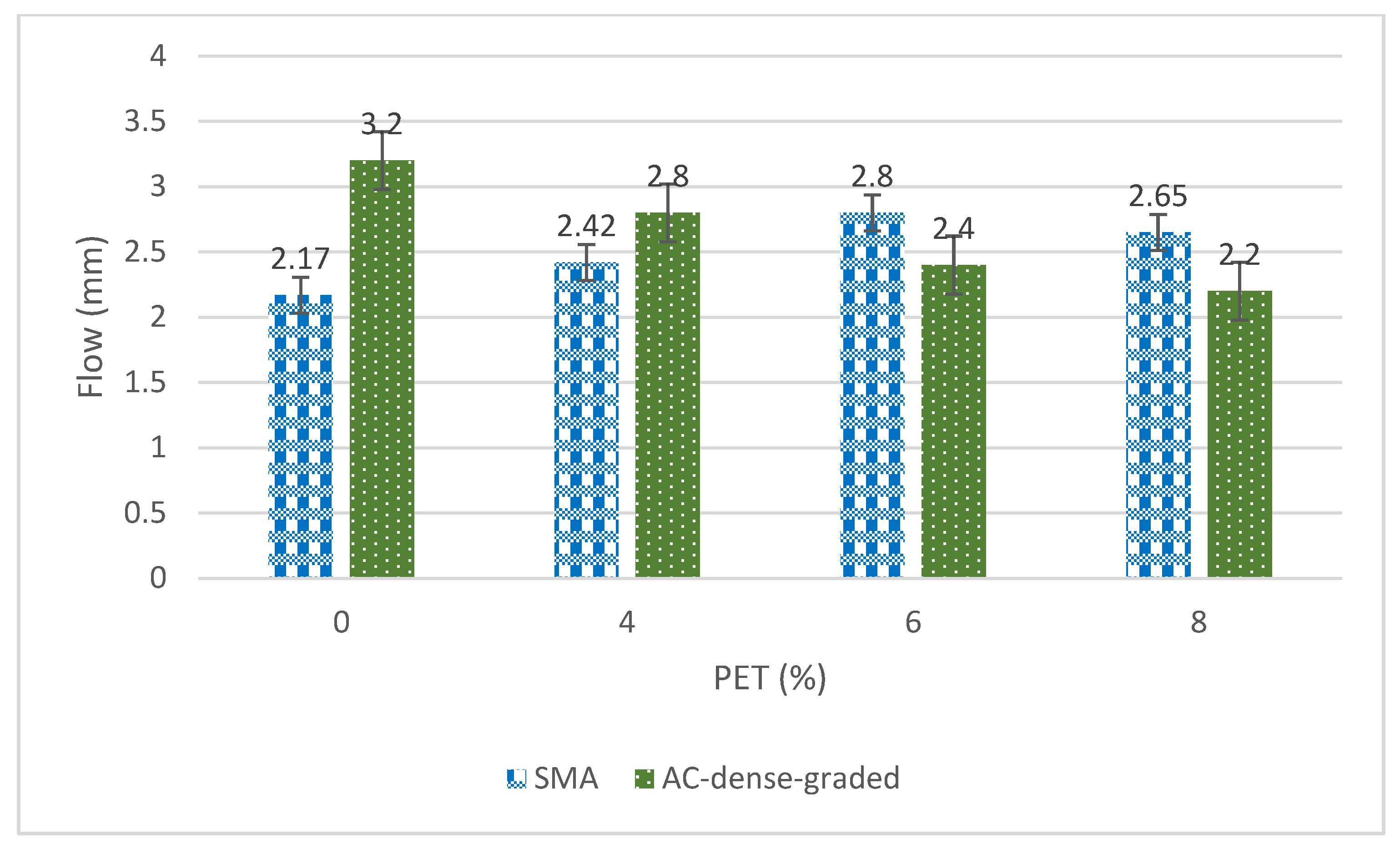
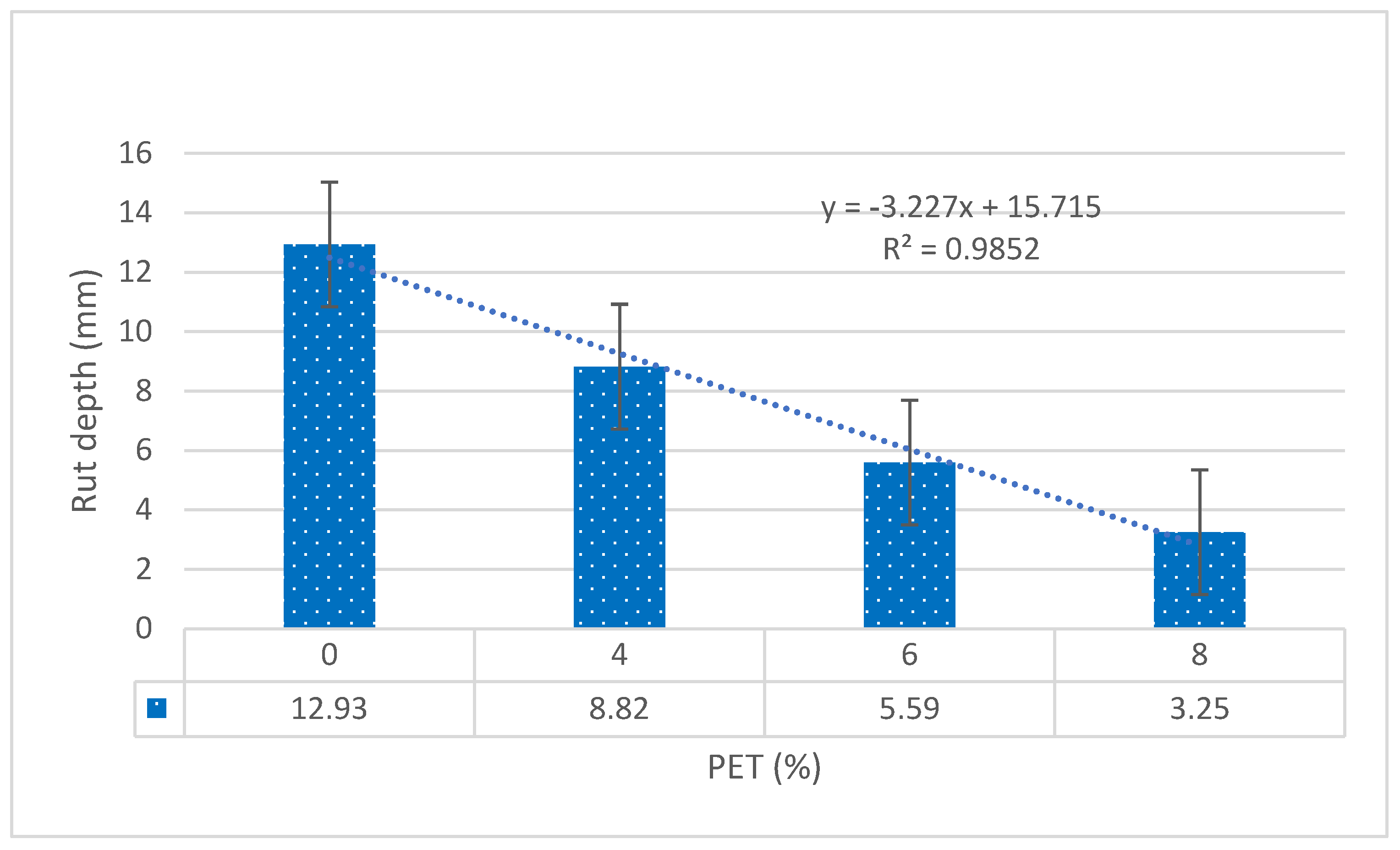
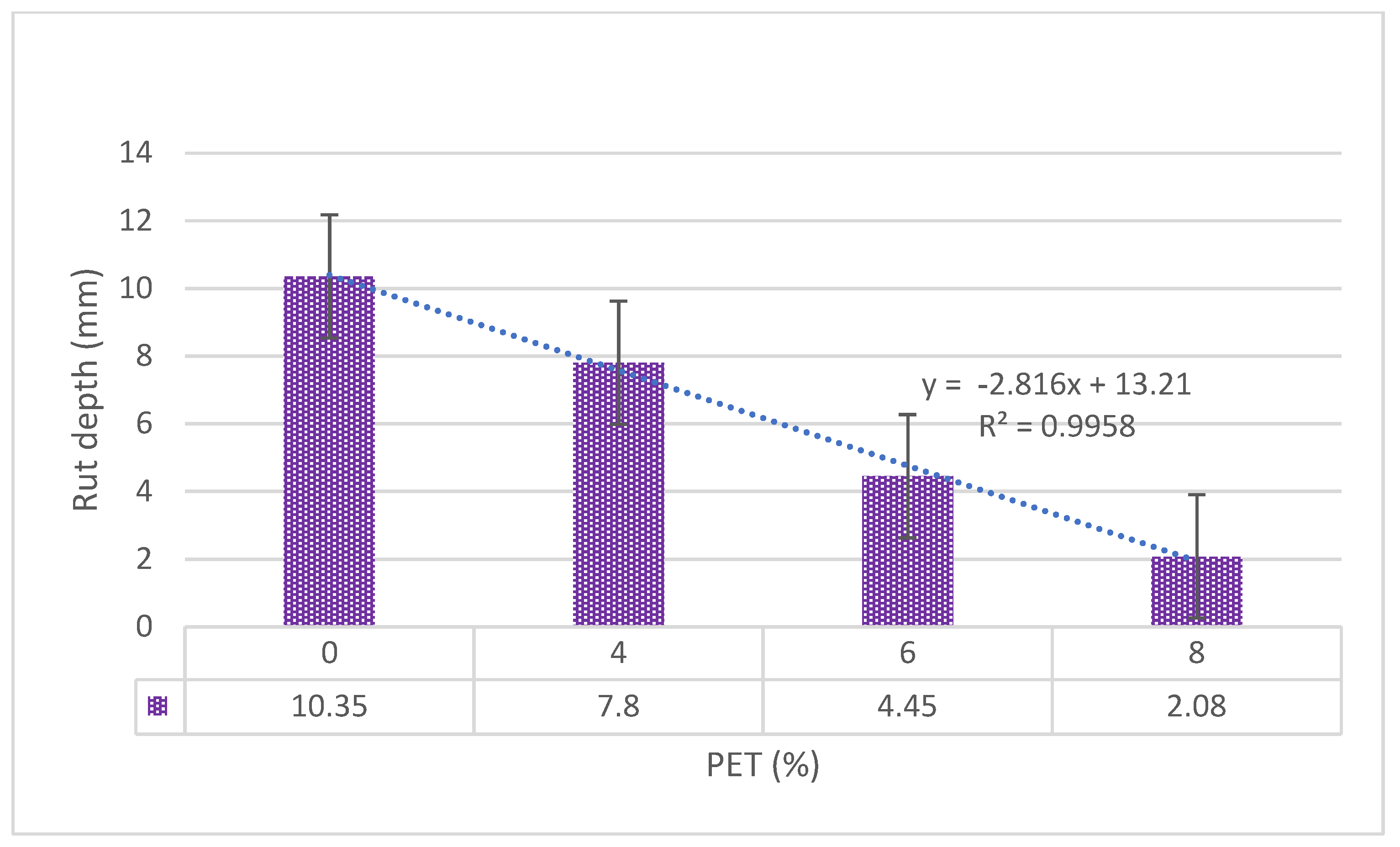
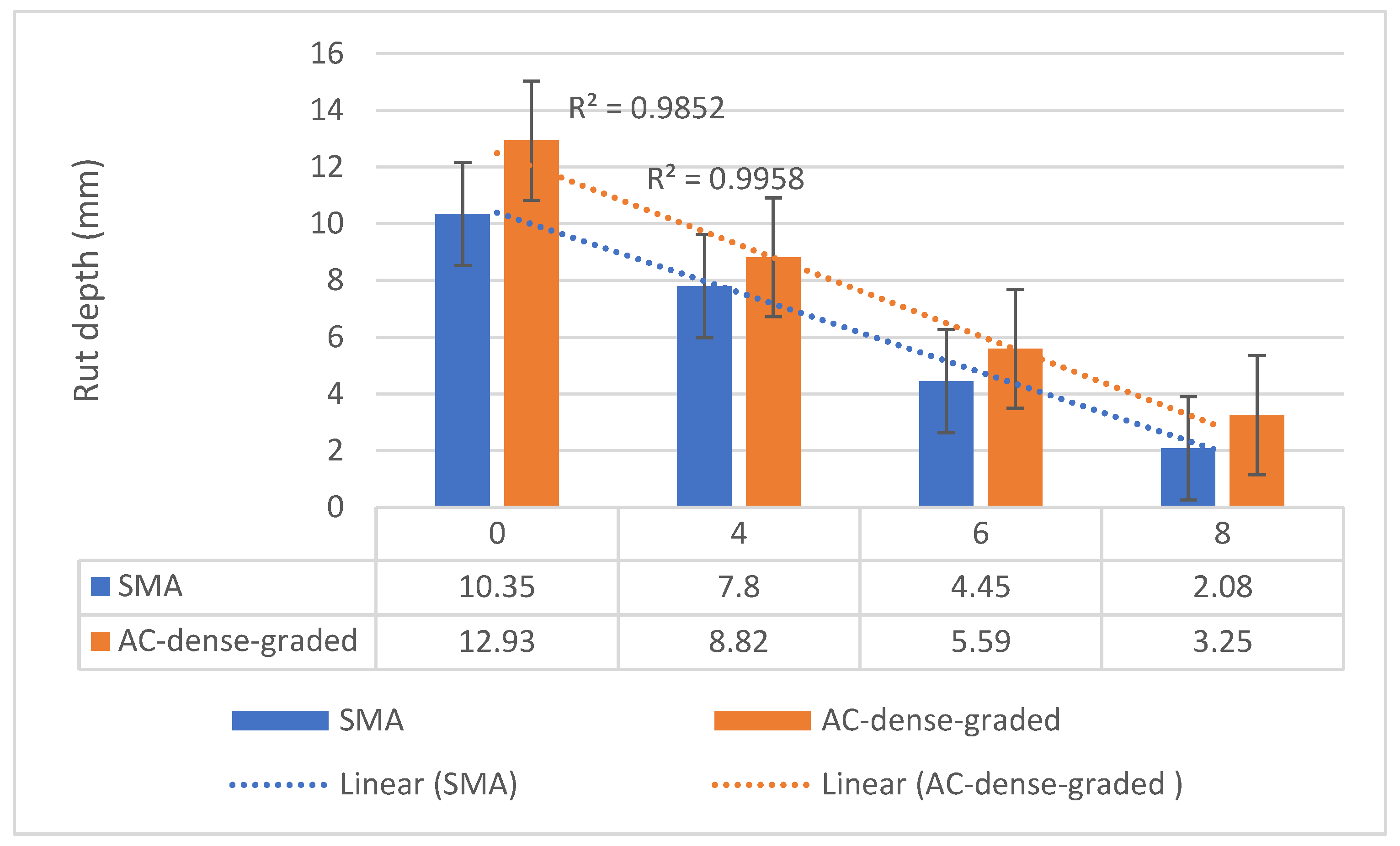
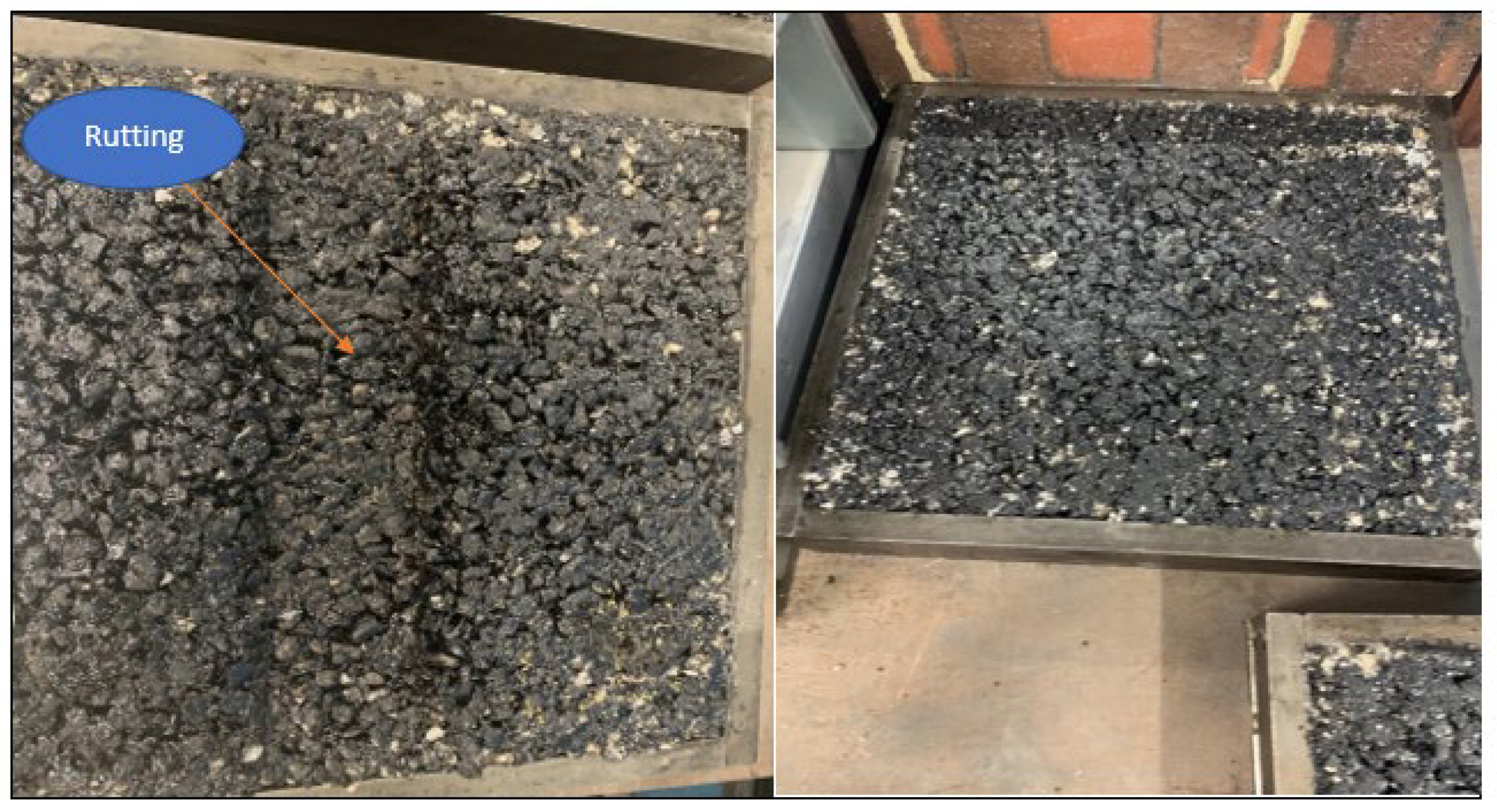

| Properties | Data | Unit | Methods |
|---|---|---|---|
| Penetration @ 25 °C | 41 | 0.1 mm | AS 2341.12 |
| Brookfield Viscosity @ 135 °C | 0.50 | Pa.s | AS 2341.2 |
| Flashpoint | 249 | °C | AS 2341.14 |
| Viscosity @ 60 °C | 320 | Pa.s | AS 2341.2 |
| Sieve Size (mm) | Lower Limit | Upper Limit | Selected Gradation |
|---|---|---|---|
| 19 | 100 | 100 | 100 |
| 13.2 | 90 | 100 | 93 |
| 9.5 | 72 | 83 | 77 |
| 6.7 | 54 | 71 | 62.5 |
| 4.75 | 43 | 61 | 53.5 |
| 2.36 | 28 | 45 | 35.5 |
| 1.18 | 19 | 35 | 28.5 |
| 0.6 | 13 | 27 | 20.5 |
| 0.3 | 9 | 20 | 14 |
| 0.15 | 6 | 13 | 8.5 |
| 0.075 | 4 | 7 | 5 |
| Sieve Size (mm) | Lower Limit | Upper Limit | Selected Gradation |
|---|---|---|---|
| 13.2 | 100 | 100 | 100 |
| 9.5 | 90 | 100 | 95 |
| 6.7 | 25 | 40 | 30 |
| 4.75 | 18 | 30 | 21.5 |
| 2.36 | 15 | 28 | 19.8 |
| 1.18 | 12 | 24 | 16.7 |
| 0.6 | 12 | 21 | 14.5 |
| 0.3 | 9 | 20 | 14 |
| 0.15 | 6 | 12 | 8 |
| 0.075 | 3 | 7 | 5 |
Publisher’s Note: MDPI stays neutral with regard to jurisdictional claims in published maps and institutional affiliations. |
© 2022 by the authors. Licensee MDPI, Basel, Switzerland. This article is an open access article distributed under the terms and conditions of the Creative Commons Attribution (CC BY) license (https://creativecommons.org/licenses/by/4.0/).
Share and Cite
Mashaan, N.S.; Chegenizadeh, A.; Nikraz, H. Evaluation of the Performance of Two Australian Waste-Plastic-Modified Hot Mix Asphalts. Recycling 2022, 7, 16. https://doi.org/10.3390/recycling7020016
Mashaan NS, Chegenizadeh A, Nikraz H. Evaluation of the Performance of Two Australian Waste-Plastic-Modified Hot Mix Asphalts. Recycling. 2022; 7(2):16. https://doi.org/10.3390/recycling7020016
Chicago/Turabian StyleMashaan, Nuha S., Amin Chegenizadeh, and Hamid Nikraz. 2022. "Evaluation of the Performance of Two Australian Waste-Plastic-Modified Hot Mix Asphalts" Recycling 7, no. 2: 16. https://doi.org/10.3390/recycling7020016








